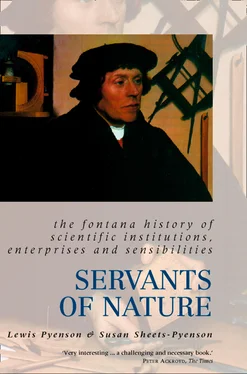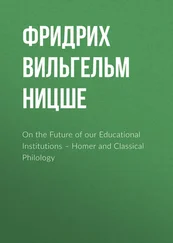An atmosphere of tolerance also characterized late seventeenth-century and eighteenth-century Scotland. There, as in the Netherlands (and unlike in England, France, or Spain), a student’s religious views were his own business; and like the Netherlands, Scotland enjoyed close contacts with both Lutheran Germany and Catholic France. Aberdeen, Glasgow, and especially Edinburgh cultivated mighty traditions in medicine and natural philosophy. James Gregory (1638–1675) and Colin Maclaurin (1698–1746), prominent Newtonians, taught at Edinburgh, as did the three anatomists called Alexander Monro (father, son, and grandson). Monro primus’s physician father had studied at Leiden where he formed a friendship with fellow student Boerhaave. Monro primus (1697–1767) cultivated the friendship and brought Edinburgh to rival Boerhaave’s Leiden as a medical school. Chemists William Cullen (1710–1790) and Joseph Black (1728–1799) both taught at Glasgow and ended up at Edinburgh. By the middle of the eighteenth century Edinburgh and Glasgow variously featured David Hume (1711–1776) and Adam Smith (1723–1790). The glow of a Scottish scientific education lasted through the nineteenth century – the tenures at Glasgow and Edinburgh of physicist William Thomson, Lord Kelvin (1824–1907) and physician Joseph, Lord Lister (1827–1912) reflect the brilliance of eighteenth-century predecessors. English speakers from the time of Charles Darwin (1809–1882) have gone down to Oxbridge to make social connections and up to Scotland to learn the sciences that were ancillary to medicine.
Autocratic theocracies of the seventeenth and eighteenth centuries, France and Spain, did not encourage freedom of thought in independent academic institutions that might ultimately threaten their own stability. The seventy-odd educational institutions of higher learning in French and Spanish lands (adding in engineering and mining schools as well as large colleges to the list of ‘universities’, properly speaking) did not blaze with scientific learning. In France, the universities receded before large establishments for scientific research created by royal patronage: the Paris Academy of Sciences and the Paris Observatory in the seventeenth century and their eighteenth-century offspring, the Paris botanical gardens and the natural history museum. Spain did not see comparable royal research institutions until the mid eighteenth century, and by then there were not many of them (notably the Madrid and Cadiz observatories and the Barcelona Academy of Sciences), but it maintained a string of institutions of higher learning in its colonial possessions.
The rise of the German university
Scottish universities possessed drawing power and brilliant professors; Dutch universities had these attributes as well as a tradition of publishing science doctorates. German universities were something of a question mark. ‘The total annual matriculations in the German universities averaged 4200 from 1700 to 1750,’ writes historian of science John Heilbron, ‘and then declined almost linearly to about 2900 in 1800.’ 1 Why, then, do we associate the modern research university with Germany?
Part of the answer relates to a medieval and Renaissance heritage that left Germany with a large number of institutions of higher learning. In the eighteenth century there were four times as many German-language universities as Dutch (five) and Scottish (four) together. The smallest of the German universities, Herborn and Duisburg, shrank to virtual extinction (sixty and eighty students respectively), but nearly all of them awarded a philosophical doctorate. German professors had their hand in scientific research from the very advent of printing, around 1450, and in old-style Jesuit universities and colleges (where philosophy still preceded professional studies), there was adequate employment for science researchers.
Part of the answer relates to historical accident. Only three Dutch universities (plus Louvain and Ghent, which the Netherlands lost to Belgium in 1832) survived the Napoleonic interregnum; it was not until after the middle of the nineteenth century that Leiden and Utrecht began to benefit again from Dutch colonial prosperity. Then, too, the Scottish medical faculties overwhelmed arts and sciences, which never succeeded in organizing a doctoral programme. Some of these conditions also applied to Germany, of course, which lost a good number of universities to Napoleonic reorganization. But eighteenth-century Germany nevertheless pioneered a new kind of university, where priority went to the philosophy faculty, and this is the image we see everywhere today, when we are accustomed to ‘doctor of philosophy’ degrees in such unphilosophical subjects as nursing, engineering, and agriculture.
The German universities benefited from competition among the various German states in attracting students and generally building up academic prestige. The dominant late seventeenth-century universities were at Leipzig (belonging to Saxony) and Jena (belonging to Weimar). Prussia then founded Halle in 1694 to siphon off talent from nearby institutions. Hannover founded Göttingen in 1737 to remove the shine from Halle. Maria Theresa revived the moribund universities under Austrian care beginning in the 1750s, banishing Aristotelian scholasticism in favour of experimental physics; her reorganization affected Freiburg im Breisgau, Graz, Innsbruck, Prague, and Vienna, and it had a notable impact on collegiate-structured Pavia, in Austrian Italy. To make their mark, these new universities were charged by their state to teach and inspire by propagating and contributing to the stock of knowledge. This notion appeared early in the eighteenth century under the Leibnizian natural philosopher Christian Freiherr von Wolff (1697–1754), who lectured and wrote from Halle and Marburg, consulted widely across Europe, and turned down a dozen or so university calls.
Emphasizing research in a teaching climate followed the rationalist precepts that had taken Europe by storm in the seventeenth century – notably those of Descartes, Newton, and Leibniz. Uniting research with teaching fitted well with the emphasis on facts and experience that radiated from the writings of the foremost proponent of the new science, Francis Bacon. For the most part the innovation occurred earliest in universities without a medieval pedigree. The receptivity of institutions to change is related inversely to their entrenched traditions.
The professorial research function was opposed by privileged members of scientific societies, who received state emoluments for innovating without having to lecture. But the new style universities were adamant about encouraging research, and they made producing new knowledge a condition of professorial appointment, as, for example, with Johann Tobias Mayer’s (1723–1762) chair of physics at Göttingen in 1750. The condition extended to all fields of learning, and universities that ignored it – for example Basle, which at the time chose professors by lot from a slate of three men who usually belonged to the local patriciate – did so at their peril. It gave rise especially to the earliest institutional union of research and teaching known as the philological seminar.
The eighteenth-century university seminar was a key development, and it emerged from the discipline of comparative philology. Two hundred years of European expansion had stockpiled an astonishing variety of tongues. The literature in some of these was sophisticated and not completely foreign to European minds. Sanskrit – the Latin of India – found great appeal among scholars at the new universities, who set out to relate it to everything else they knew, dead or alive. The puzzle had endless parts, each one of which was ideally suited for a doctoral dissertation. The programme demanded specialized libraries, which would be increased from one generation to the next; it required a home and a budget, which university authorities then (no different from now) grudgingly provided. The doctoral seminar was thus born in a room surrounded by dictionaries and reference works. It has remained there ever since.
Читать дальше












